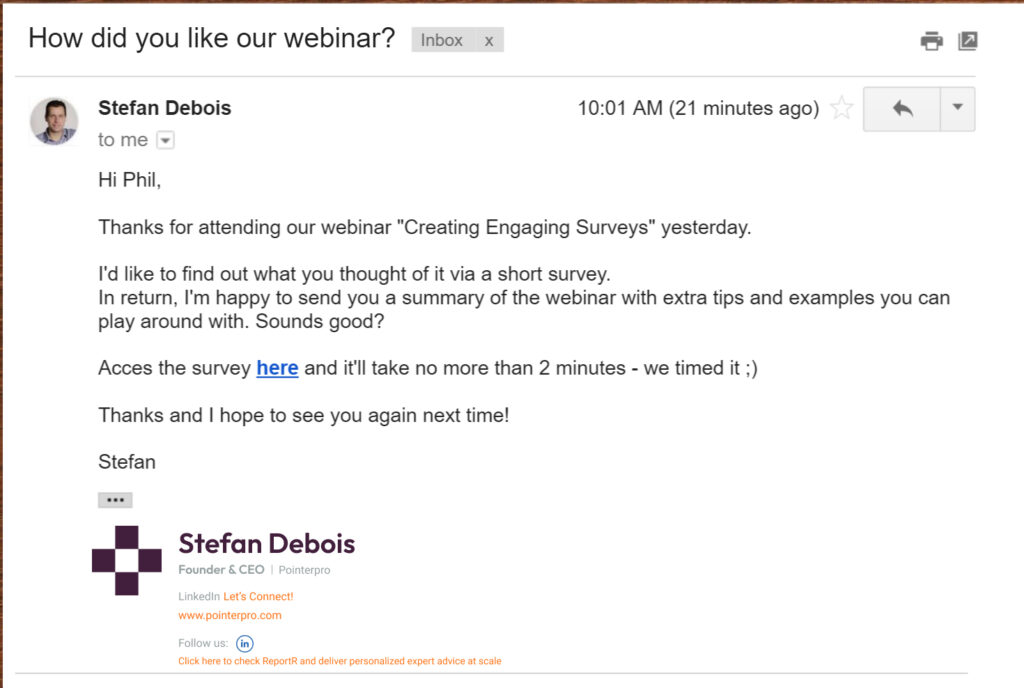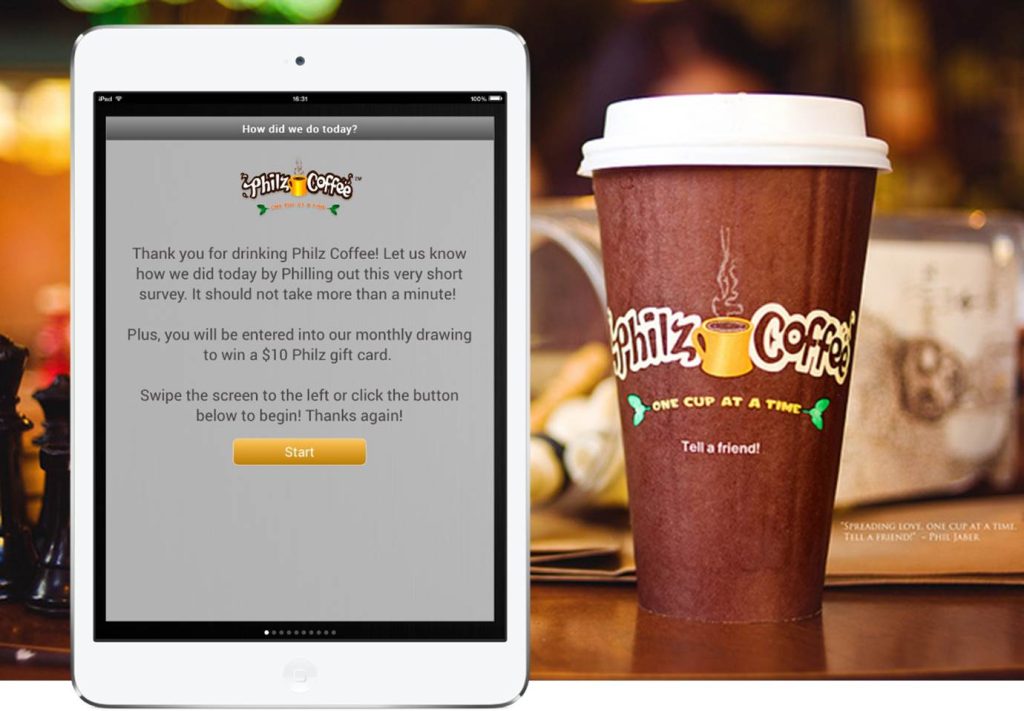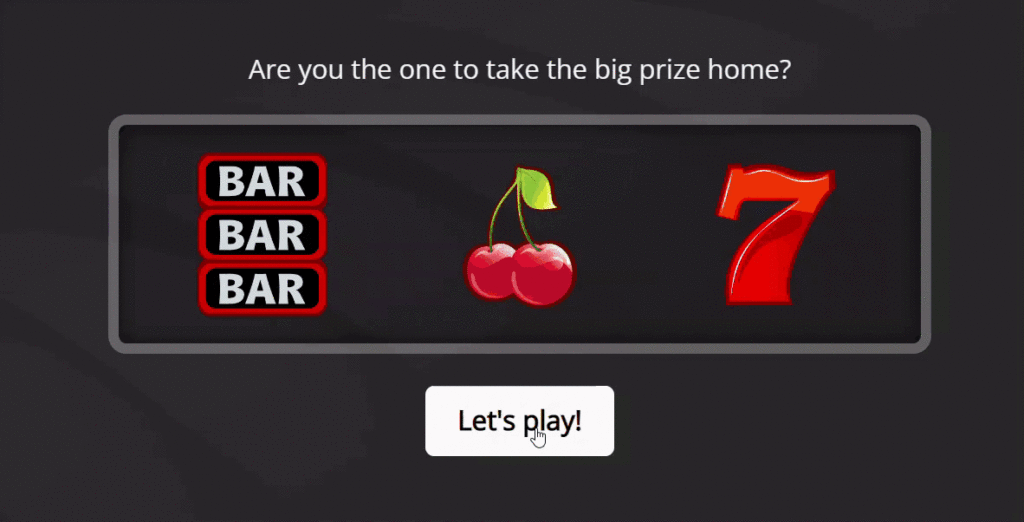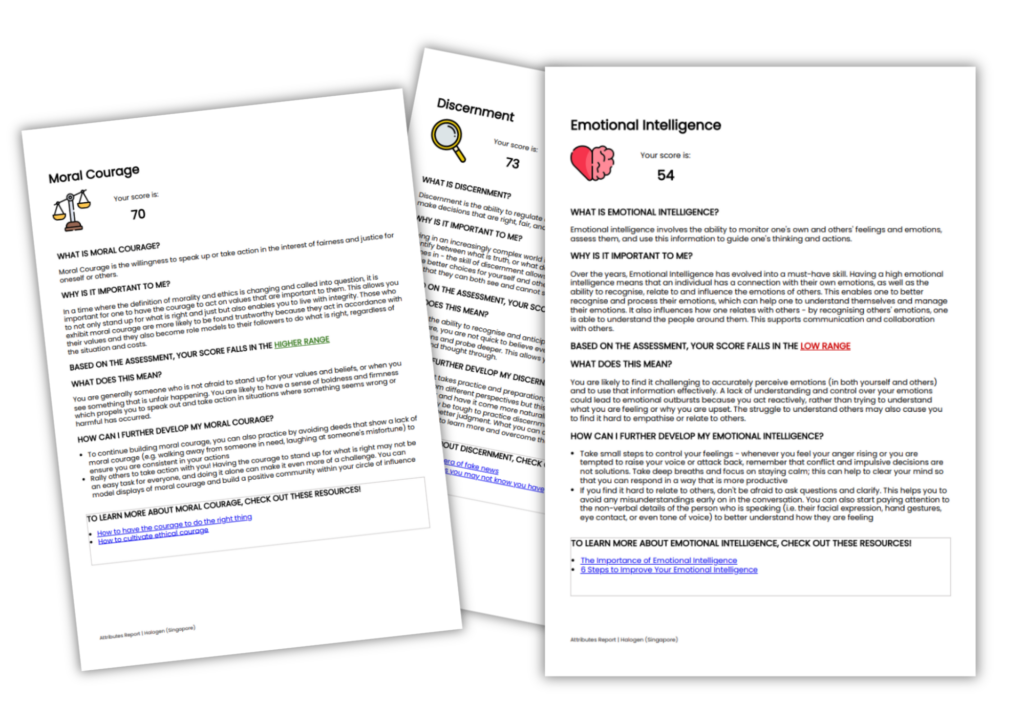Now more than ever, when it comes to customers, businesses have no greater friend and no worse enemy. Win over your customers and you can turn them into powerful brand ambassadors. Treat them poorly and they can take to the internet to mobilize against you. The problem is, only 4% of dissatisfied customers voice their complaints. The rest simply don’t come back.
The question you have to answer is: what can you do to identify how happy your customers are?
You should be measuring customer satisfaction. And the most effective way to do that is to communicate with your customers directly and effectively using feedback surveys. So, to help your business kickstart its customer satisfaction goals, take a look at these 13 approaches businesses can use measure customer satisfaction with surveys.
13 methods to measure customer satisfaction
- Basic email campaign
- Email campaign using custom content
- eBook downloads
- Series of feedback surveys to track satisfaction over time
- Embedded survey in Facebook
- Survey through Twitter
- Create social media accounts with rating systems
- QR codes
- Embed a survey in your native app
- Use surveys to reinforce your brand
- Unmanned kiosk
- Surveyor with an iPad
- Company booth
1. Basic email campaign
This is likely the most popular way to deliver a survey for a reason: it’s simple and effective. The first tricky part is obtaining an email list. It’s wise to collect email addresses from your customers from the start to make sure you can contact them later with a survey.
Once you’ve got a mailing list, use an email campaign to direct customers to your online survey. Try writing a direct subject line like “Take Our 3 Minute Survey to Win a $100 Gift Card.” Or you can offer first access to premium content or loyalty points. Make it specific to your customers. Again, it will make a big difference in your response rate if you make it clear what time commitment you’re asking for from the customer and why they should take the survey.
2. Email campaign using custom content

But there’s much more to online surveys than basic email campaigns. Here’s your chance to think a little further outside the box when it comes to creating an email survey. This could mean including a widget like a digital scratch card to make the survey more fun for those taking it on a mobile or touch screen device.
You could also create a custom piece of content, like an article, or video, exclusively for survey takers. By offering them value and speaking directly to them with great content, you can combine an effective customer satisfaction survey with brand building.
3. Ebook downloads
Ebooks can work in several ways here. One, as mentioned, is as a reward for taking a survey. But they can also be used to obtain emails for use in a later survey. Start by thinking about which customers you really want feedback from, and tailor the content of the ebook towards them.
Let’s say you’re a gardening company and you want to get an idea of how customers who enjoy growing herbs at home feel about your brand. Write an ebook on that subject and use it to obtain the emails of customers with that particular interest: customers enter their email addresses to obtain a download link for the ebook.
4. Series of feedback surveys to track satisfaction over time
With the right incentives (it’s better to use a higher value item like a product upgrade), you can get customers to fill out multiple surveys over time. Using email and a service like Mailchimp, you can send these surveys out at set intervals to see how customers’ views evolve over time. To increase response rates, you can limit the number of questions you ask – customers can complete a one-question survey in just 10 seconds.
Let’s say you’re Kia. You want to know how your customers feel about your cars one month after purchasing, six months after purchasing, and four years after purchasing. You can obtain their email when they buy the car and offer a free trip to a major auto show for one survey taker who completed all three surveys. This lets you see how individual customers change their opinions over time instead of a broad anonymous snapshot.
Measuring customer satisfaction through social media surveys
Besides the typical methods of targeting customers online, social media presents its own set of challenges and opportunities. If you simply take an email survey and throw it onto Facebook, you’re missing the chance to optimize for the platform. The survey has to fit the moment it’s offered, and social media is no different.
Be aware that social media response rates will generally be much lower than what you’ll see from email campaigns, with a large enough group you can still get quality data. Here are four ways to use social media to deliver great surveys.
5. Embedded survey in facebook

We all know that the more steps involved in a process, the less likely people are to complete it. That’s where embedding a survey in facebook offers a huge advantage by allowing the surveyor to complete the survey without the need to open another tab or leave Facebook.
Combine this with the highly specific customer targeting abilities of Facebook ads, and you can obtain survey information from very specific groups. For example, if you’re a media company and want to find viewers who are fans of both of your top-rated shows, and are between 25 and 40 years old, you can easily single out only that group for your survey.
6. Survey through Twitter
If you’re looking for a simple survey with a large number of responses, social media platforms like Twitter can allow you to do just that. By creating a hashtag and prompting your followers to tweet their answers to some question you can quickly get a large number of answers about a question while simultaneously engaging your customers.
Let’s say your company just unveiled a design for the latest version of its photo editing software with a list of new features. Tweet it and ask people to let you know what they think of the features and whether they address your customers’ needs to get a fast snapshot of how they feel about your new product.
7. Create social media accounts with rating systems
Here’s another example of surveying without creating what appears to be a survey. Making sure your Google Business, Facebook, and other social media accounts have the option for customers to leave comments and ratings means you can get public feedback on how your company is doing with customers.
Your CTA could be something as simple as “Let us know how we’re doing, rate us on ______, ”, find more inspiration for call-to-action examples here.
Building feedback surveys into your product or service
One of the best ways to get high-quality survey-based feedback from customers is by integrating a survey directly into the customer’s experience. Instead of coming across as a distraction or unnecessary step, the survey becomes another part of using the product or service. When done well, this can provide extremely high feedback rates among users, meaning your data is of high quality and is more useful.
In fact, targeting users at more specific moments and understanding their mindset in those moments is at the core of how new ideas like micro-moments are changing how we understand advertising online.
Below are three ideas for how to do that.
8. QR codes
Including a custom QR Code (those small squares of squares you photograph with your phone to bring you to a website) along with a URL on your packaging, business cards, or other materials is an easy way to direct customers towards a customer feedback survey. So, even if you’re, say, a plumber, you can include such a code on your business card, along with your contact information to encourage customers to call you anytime and let you know how they like your service.
QR codes can also be a great way to lead customers into both taking a survey and interacting with your product. One example saw 97% of survey respondents providing an email address and 10% posting a picture of themselves using the product. In this case, the code worked well as an invitation to interact with the product online.
9. Embed a survey in your native app
If your company has already created an app for one of its products or services, integrating a survey into it can allow you to target customers at just the right moment. This can be done through a prompt, or even through in app chat. So whether you’re making smart lightbulbs or just a fun Candy Crush-style game, in-app surveys offer customization and reach.
10. Use surveys to reinforce your brand

Building a brand focused on customer satisfaction opens the door for integrating surveys into your brand. These can combine the survey benefits we’ve already discussed with those of building a strong brand identity around customer feedback. This way, each time you ask a customer to fill out a survey, you’re also reinforcing your brand identity. It also means the integration of the survey into your product or service feels more natural.
If you’re a cafe and want to stand out from the crowd, you could rebrand yourself as an intensely customer-focused business, devoted to bringing customers the best experience. To show that dedication, you’re offering great rewards for filling out surveys and giving ideas for what kinds of coffees, pastries, and music your customers would like more of in your cafe.
Real-life interactions
Dealing with customers face to face remains an outstanding opportunity to build customer loyalty. That’s because face-to-face interactions are the most powerful type of interaction for B2B companies, as well as a simple fact of life for most B2C companies.
That means this is an optimal time to make a strong impression and measure that impression. Here are some ways to measure customer satisfaction in real-life interactions.
11. Unmanned kiosk
If you’re short-staffed at an event or conference but would still like to get general feedback from attendees, you can set up an unmanned kiosk with a device like an iPad. What’s important here is to make sure your software has a kiosk mode, which prevents unauthorized users from accessing the iPad’s other functions.
The other important element here is an incentive. You’ll want to come up with a way to entice people to take the survey. Offering free giveaways (this can be anything from free online storage via a redeemable code to an ebook) when a user provides their email at the end of the survey is one way to encourage more participation.

You can also use the simple incentive of a more fun experience. Embedded widgets, which make use of touch screens to create things like a digital scratch card or a slot machine, can bring a smile and a more enjoyable experience. Try pairing the kiosk with a large and friendly sign informing potential survey takers that they will be entered to win a free weekend stay at a popular hotel chain or something similar.
12. Surveyor with an iPad
Attaching a friendly face to your survey is a fantastic way to combine survey-taking with brand development. The research relating to the power of face-to-face interactions cited above applies here.
Imagine people attending a conference are queuing to enter a venue before a mainstage event. That’s a perfect moment for your survey taker to have a friendly chat and find some undistracted attendees who would be willing to take a minute to fill out the survey. It’s always best to give the survey taker a time estimate for how long the survey should take to complete.
If you have enough staff, two-person teams can work even better in collecting survey data. By bringing different personalities together, you can help make sure your team is equipped to interact with all kinds of customers.
With both one- and two-person teams, being able to move freely at an event is a real advantage, to ensure your survey is there when and where customers are able to complete it. So when everyone moves to a new area of an event for lunch, your kiosk can’t follow them but your human survey givers can. Still, depending on the circumstances of the event, a booth may be your best option.
13. Company booth
Having a manned booth set up and equipped with iPads or other devices for customers to take your survey allows for a more visible presence and more branding. Imagine a large sign in front with your company’s unique logo design and a friendly invitation to “talk to us about your experience.” Add in friendly representatives and you’ve got a great way to collect important information and represent your brand.
Of course, it also makes it easier to offer free food or other items as an incentive to participate. Arranging these items on the booth can make for an eye-catching way to bring potential survey-takers to you. Consider what kind of image you want to create and craft a booth experience and survey that reflects it.
The right partner
Granted, the easiest way to get started crafting top-quality customer satisfaction surveys is to work with the right partner. Pointerpro offers powerful, yet easy-to-use software to get you learning more about your customers in no time.






